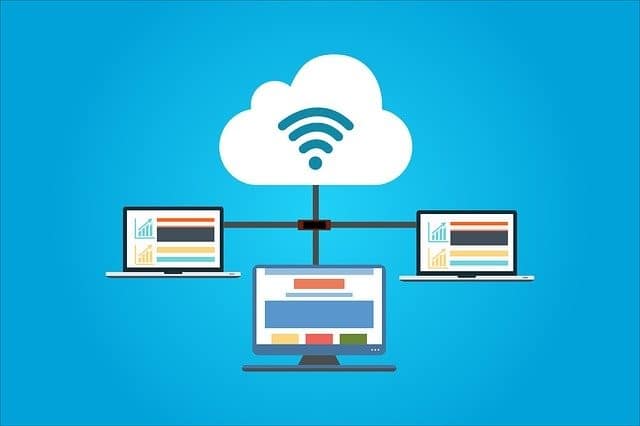AWS Cloud Computing Pricing Guideline
Thousands of small and large enterprises today swear by the efficiency and ease offered by Amazon Web Service (AWS) cloud computing services. Apart from offering an incredible array of features, the AWS cloud computing services are lined with incredibly powerful safety features which make it ideal for all types of businesses.
However, as its services are vast and varied this often tends to create confusion among clients as to how they are being charged. In this article, we are going to try and understand how AWS cloud computing pricing actually works.
Different Types of AWS Pricing Plans
The official AWS pricing page lists 3 different ways that clients pay for the services they use. Let’s take a quick look at them:
1 – On-Demand (Pay – As – You – Go)
This is one of the most common forms of pricing for AWS services. Under this plan, you can use cloud resources when you need them. At the time of billing, you are charged for only those services that you used.
This type of pricing plan does not require customers to buy physical servers and prevents unwanted expenses.
2 – Save Your Reserve
This plan allows users to request specific services beforehand. This forms a contract between user and AWS which also helps the user to get the significant price reduction.
Under this plan, you can choose to pay for your cloud computing service plan through three different modes:
- Pay nothing upfront (this is more expensive)
- Pay partial upfront (this is slightly less expensive)
- Pay all upfront (this is the least expensive option)
3 – Use More Pay Less
Several AWS services are provided through a tier-based system that is dependent on your usage. Under this plan, the more services you use, the less are you charged at the time of billing.

How AWS Cloud Computing Pricing Works – use more pay less
As easy as the pricing plans seem, there are still thousands of AWS users who end up forking out an extensive charge at their billing time.
Facts about AWS Cloud Computing Pricing Plans
Let’s check out some of the basic tips that you need to keep in mind when deciding on the best-suited AWS pricing plan for your requirements:
- Pay as you go is quite expensive – Many users are under the wrong impression that AWS cloud computing services are inherently cheap. Every cloud service provider emphasizes on their rates to sell their service plans. However, it is not always advisable to choose a pay-as-you-go pricing plan for cloud computing.
- Increased commitment should mean lowered prices – This is the best way to save money on your cloud computing service plans. Make a commitment to AWS to use their services for the long term and you get significant price-cuts.
- Read terms and conditions carefully – Always make sure to read the fine print carefully before choosing the type of AWS pricing plan that suits your needs. The cloud computing service provider offers documents with detailed terms and conditions clearly outlined. Although it might seem like a boring task, it is necessary to read through it and understand the conditions completely before committing yourself for any AWS service.
Amazon Web Services Pricing Plans
To make it easier to understand the pricing plans of AWS services, we are going to set EC2 as our standard as it is one of the most commonly used cloud computing services.

Amazon Web Services Pricing Plans
Pay-as-you-Go
When using AWS services under the pay-as-you-go (on-demand) pricing plan you are charged for the services either by the hour (or even per-second) without having to make any initial payments.
This is the best option for users who wish to test the service and are not ready to make a long-term commitment for the service.
PROS
- Most efficient payment pricing plan
- No-down-payment required
- Excellent for unexpected jobs
CONS
- Most expensive payment plan
- Bills may get high unexpectedly
Spot Instances
Spot instances are at least 90% cheaper as they occupy the spare space which is normally seen with large-scale cloud computing services, such as AWS.
However, the downside to using spot instances is that in case another user offers more money, the service may send you a 2-minute notice before terminating your spot instance connection.
PROS
- Largest cost-efficient option
- Ideal for spare computing and quick scaling
- AWS Hybernate saves instances in-state and releases them when another spare capacity becomes available
CONS
- Your instance gets terminated at any time with only a 2-minute warning
- Harder to utilize completely
Reserved Instances (RIs)
Reserved Instances (RIs) are ideal for users who are looking to commit themselves for 1 to 3 years with AWS. Reserved instances are charged whether they are used or not however the company does offer a significant discount. This service also offers payment options – full upfront, partial upfront and no upfront payment.
PROS
- Easiest to setup and maintain
- Excellent cost-cutting measure
CONS
- Multiple RIs can be difficult to manage
- Need to pay for reserved capacity even when not used
Bottom Line
Let’s hope that this guide to understand how AWS cloud computing pricing plans work was helpful and will be an advantage to you when choosing the best-suited AWS services for your enterprise.
